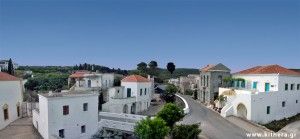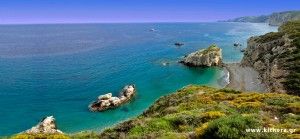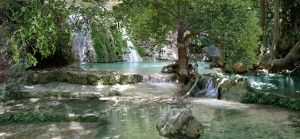Kythera is an island located at the southernmost end of the Aegean Sea, between the Peloponnese and Crete. It has an area of 279 sq. km. and a population of about 3,000 inhabitants. The island has a rich history and mythology, as it is believed to be the island of Aphrodite, the goddess of love and beauty. According to Hesiod, Aphrodite was born in the foam of the sea of Kythera, when Saturn cut off the genitals of the father of Uranus and threw them there. Aphrodite ascended to the land and became the protector of the island.
Kythera has a unique geographical and geological character, as it combines elements from the Aegean, Ionian and Crete. The island has many mountains, gorges, springs, lakes, caves and beaches, which create an impressive landscape with a variety of flora and fauna. Kythera also has a rich biodiversity, being home to many species of birds, reptiles, amphibians and marine organisms. The island is ideal for nature and adventure lovers, as it offers many possibilities for hiking, cycling, canyoning, scuba diving and sea kayaking.
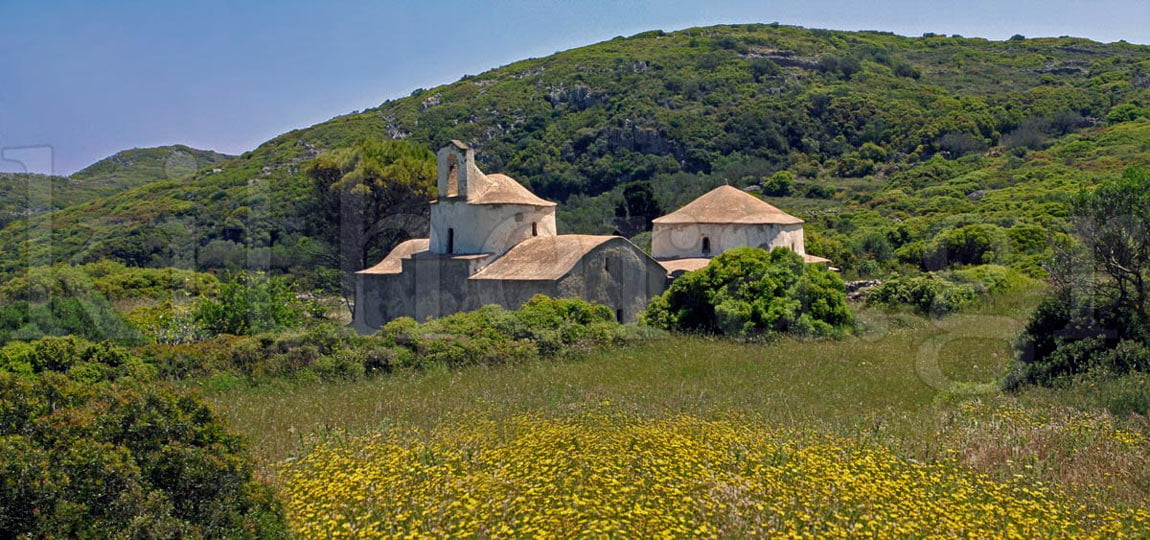
Kythera also has a rich cultural heritage, having been influenced by many cultures and peoples, such as the Minoans, the Mycenaeans, the Dorians, the Spartans, the Athenians, the Romans, the Byzantines, the Venetians , the Turks, the French, the British and the Greeks. The island has many monuments and attractions, such as Venetian castles, Byzantine churches, monasteries, ancient ruins, traditional villages, museums and galleries. The island also has a vibrant folk art and tradition, expressed through music, dance, poetry, painting, weaving, pottery and gastronomy. The island has many holidays and festivals, such as Easter, the feast of Agios Theodoros, the \”gyra\” of Panagia Myrtidiotissa and the Kythira Festival.
Kythira is an island that can satisfy every visitor, as it offers a variety of options and experiences. It is an island for all seasons, but Spring is ideal to enjoy the spring on the island of Aphrodite, the traditional epitaphs in the villages, the Resurrection in the burning castle of Chora and the feasts with spitting lamb on the beach of Agia Pelagia.
How to get to Kythera:
With the ship PORPHYROUSSA with daily routes from Neapoli Laconia, which is about 4 hours from Athens by car. The duration of the trip is approximately 1 hour and 25 minutes.
With the ship AQUA JEWEL from Piraeus, which operates routes to Kythira twice a week, journey time is 6 hours and 30 minutes. Also from Gythio, where the journey takes 2 hours and 30 minutes.
From Kasteli, Crete, with a journey time of about 4 hours.
By plane from Athens, with routes five times a week, by AEGEAN and Olympic Air. The journey takes about 35 minutes.
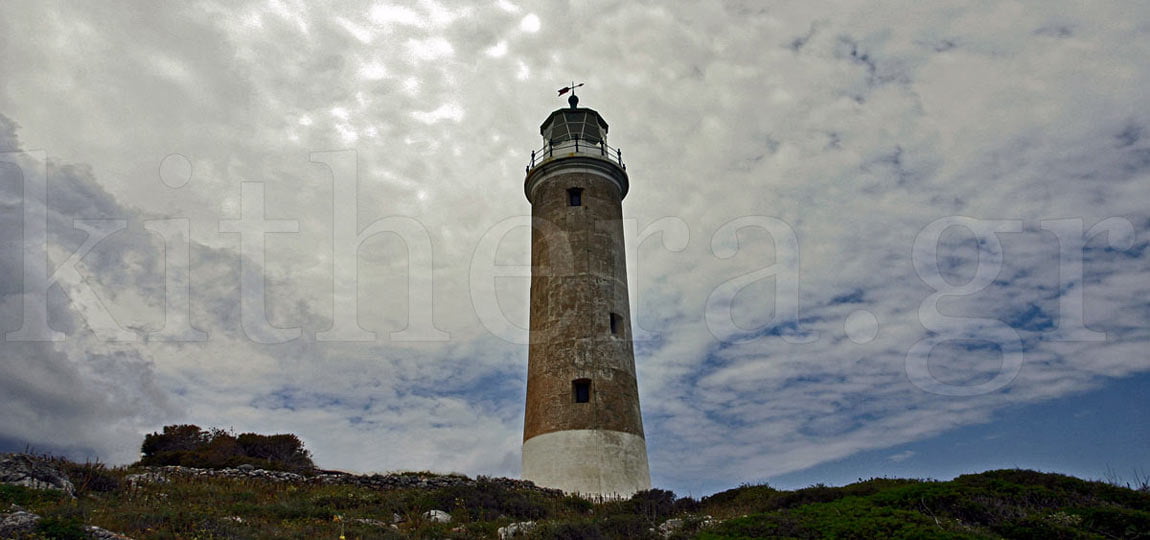
What should I see in Kythera?
In Kythera you will find many places worth visiting, such as Venetian castles, Byzantine churches, ancient ruins, traditional villages and settlements, museums and galleries of modern art.
Some of the most famous attractions are:
The great castle of Chora, built by the Venetians in the 13th century and has a stunning view of the Cretan sea. Inside the castle there is the Catholic Church of Panagia Kastriani, the Historical Archive of Kythira, and the Museum of Seals.
The castle of Kato Chora Mylopotamos, built by the Venetians in the 16th century and was the capital of the island until the 18th century. Inside the castle are the church of Agios Sophronios, and many other important Byzantine churches.
The small castle of Auleimon, built by the Venetians in the 17th century and was in a strategic point for the defense of Kythera.
This post is also available in:
 Ελληνικα (Greek)
Ελληνικα (Greek)



